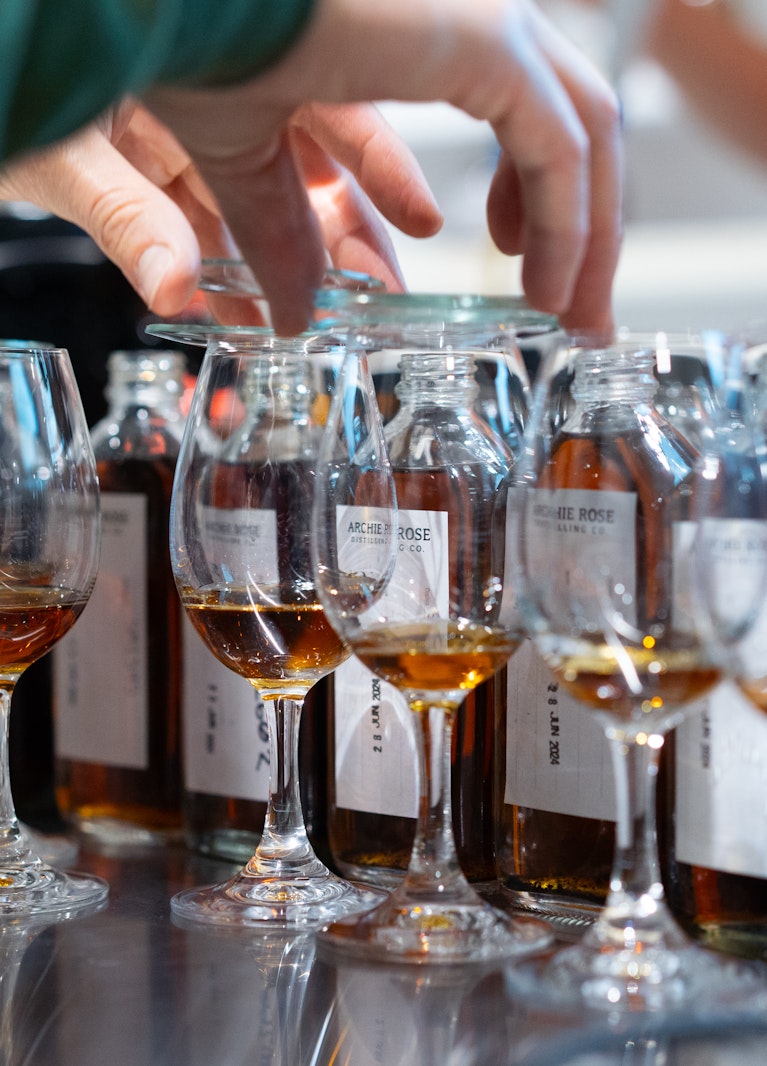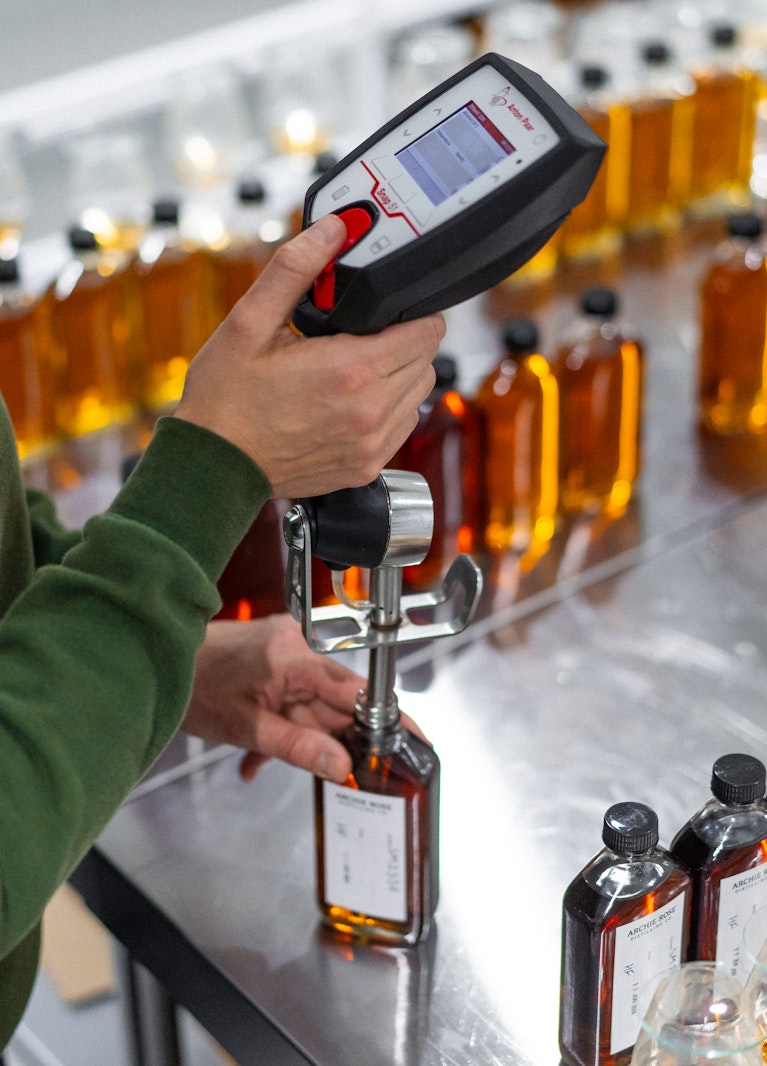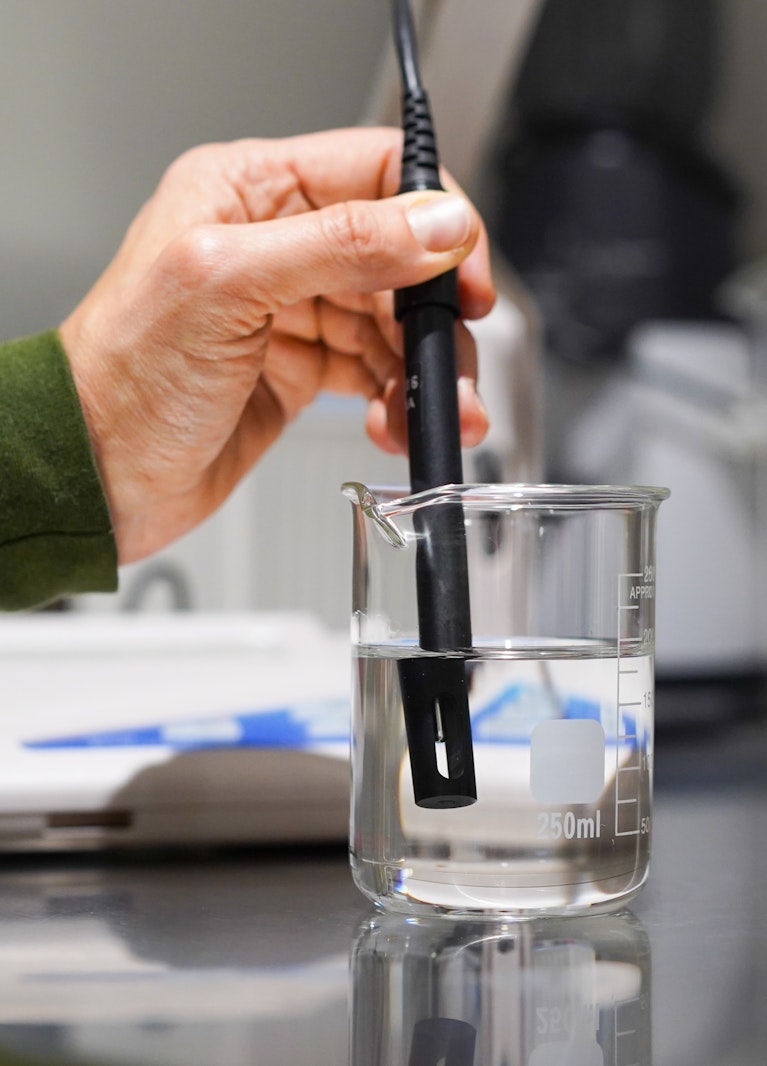Behind the Doors of Our Sensory Lab
Even within our team at Archie Rose, only a few get to go behind the doors of our Sensory Lab at our distillery in Botany, Sydney. Our Sensory Lab is the dedicated research space, built in 2022, that has been custome designed to support the distilleries quality and blending requirements. Since then, our team of four, led by Senior Spirits Blender David ‘Fish’ Fisher, has been able to work with the utmost precision on reviewing desktop fermentations, distillations, sensory exploration and analysis. Behind these doors, our R&D team trials, optimises, and experiments with flavours and production techniques to support our constant culture of spirit innovation.
Our Sensory Lab allows our team to push the boundaries of what’s possible in spirits production. The daily work here is incredibly technical, highly organised, and just as fascinating. From daily assessments of our water supply, quality checks on incoming grain and botanicals, all the way to choosing which casks will be in our single cask releases, the work is extremely varied and highly unique. So, in celebration of all things sensory this month, we thought we’d open the doors and give you an exclusive look at what goes on in the lab, with a particular focus on some of the tools we use daily.

Nosing Glasses
This is the tool we use the most in the lab. We use these for almost every assessment that we do: of water and raw materials coming into the distillery, during distillation for taking cuts, after distillation for assessing the spirit, during maturation for assessing the spirit, and during all the blending we do.

Density Meter
This is used to check the ABV (alcohol by volume) of all our products throughout all stages of production. This is crucial as the ABV of spirit significantly impacts the flavour our customers will experience, and it is also one of the critical legal frameworks within which we work.
Turbidity Meter
This helps us understand a liquid's relative clarity; it does not measure colour. An important distinction is that some flavour compounds in gin can cause hazing in a final spirit, but during maturation, several elements dissolve into the spirit and must be carefully monitored during blending aged spirits.

Conductivity Meter
It may not seem like the juiciest part of our work, but testing water quality is one of the key quality checks in our production process. We use a conductivity meter to check the water daily in the distillery, to ensure that the water used in all our processes meets all specifications. This is both a sensory assessment and a lab analysis. A conductivity meter helps us understand how ‘pure’ the water we are using is.
Spreadsheets and Micropipettes
Blending is much more finely tuned than many people think. There are often times when the difference of half a litre in a 10,000L blend will be immediately noticeable. So, precision in our blending room is essential to ensure that what we blend in the lab can be replicated at scale. To do this, we have created some very complex and unique spreadsheets and work with highly accurate micropipettes. We go down to the accuracy of µL (0.001mL), and often, that may not even be a fine enough scale. And while we may not be able to show you our spreadsheets (sorry!), you’ll have to take our word for it that they are EXTREMELY COOL—if you’re into that sort of thing (which we are, obviously).